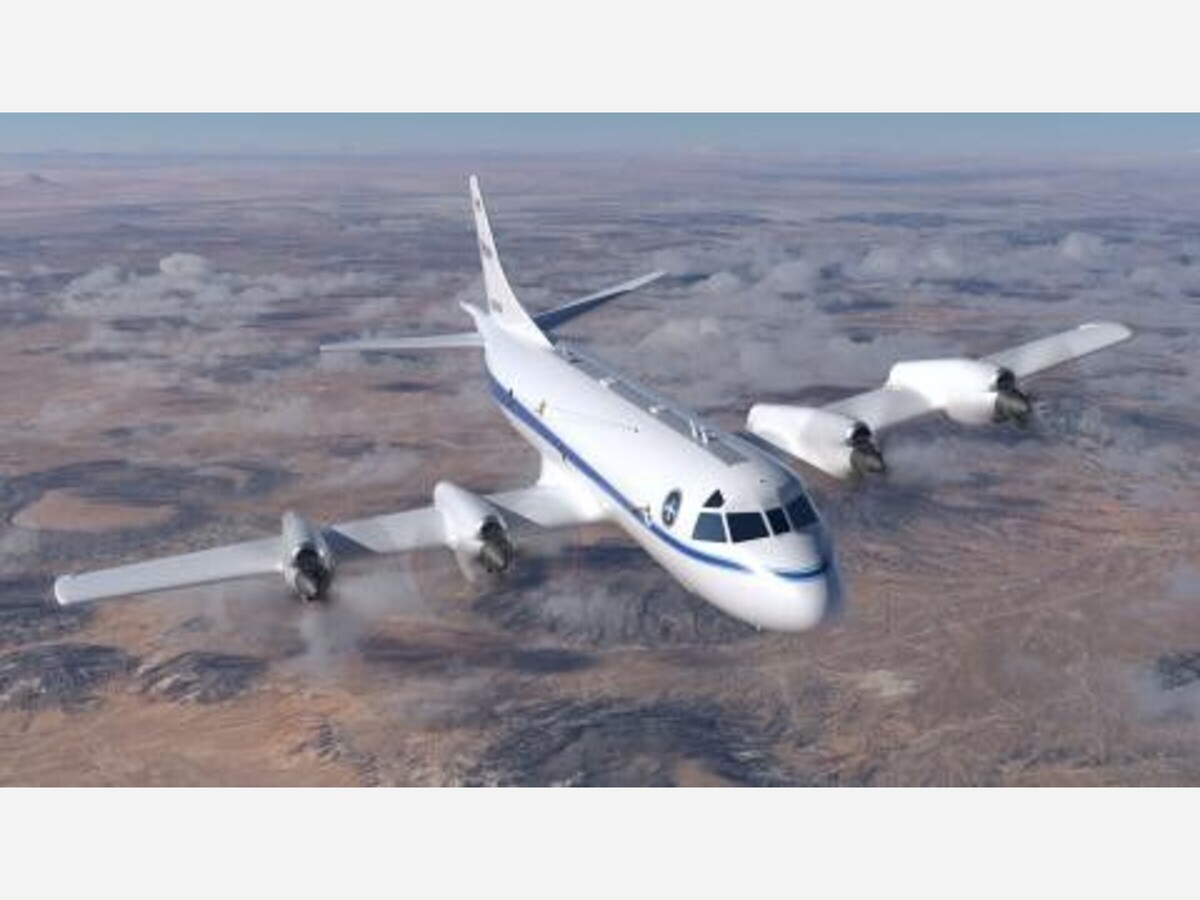Image

Very Low-Flying NASA Planes To Circle Over Baltimore Area This Week
Marylanders shouldn't be alarmed when they see very low-flying planes circling over power plants and cities this week, NASA says.
 Two NASA aircraft, including this P-3 shown here, will fly over the Baltimore region the next two weeks to collect data on air pollutants and greenhouse gas emissions.
Two NASA aircraft, including this P-3 shown here, will fly over the Baltimore region the next two weeks to collect data on air pollutants and greenhouse gas emissions. Marylanders should not be alarmed if they see very low-flying airplanes above the Baltimore region this week, NASA officials warned, as the agency launches the planes as part of a research project.
Through Wednesday, July 2, NASA planes will fly as low as 1,000 feet above power plants, landfills and urban areas. That’s barely taller than some skyscrapers and much lower than a commercial jet, which has a cruising altitude of 30,000 feet.
The planes will execute specialized maneuvers, circle power plants, landfills, and urban areas, and conduct low-altitude flybys along airport runways to collect air samples near the surface, NASA said.
The low altitude flights began June 22 in Mid-Atlantic states. Flights are planned over Baltimore, Philadelphia and some Virginia cities, including Richmond.
Flights will be conducted between June 22 and Thursday, June 26, over Baltimore and near the Virginia cities of Hampton, Hopewell and Richmond.
The flights are being conducted as part of NASA’s Student Airborne Research Program, an eight-week summer internship that provides rising-senior undergraduate students with hands-on experience in every aspect of a scientific campaign. The internship takes place on the East and West coasts.
The flights will involve the agency’s Airborne Science Program’s P-3 Orion aircraft (N426NA) and a King Air B200 aircraft (N46L). The P-3, operated out of NASA’s Wallops Flight Facility in Virginia, is a four-engine turboprop aircraft outfitted with a six-instrument science payload.
Students will assist in the operation of the instruments on board the planes to collect atmospheric data that will offer information about air pollutants and greenhouse gas emissions, NASA said.
“Despite SARP being a learning experience for both the students and mentors alike, our P-3 is being flown and performing maneuvers in some of most complex and restricted airspace in the country,” Brian Bernth, chief of flight operations at NASA Wallops. “Tight coordination and crew resource management is needed to ensure that these flights are executed with precision but also safely.”
About SARP
The Student Airborne Research Program (SARP) is an eight-week summer internship for rising-senior undergraduates, held annually on the East and West coasts of the United States. Students gain hands-on research experience in all aspects of a scientific campaign by engaging in field research and data analysis, with access to one or more NASA Airborne Science Program flying science laboratories.
The NASA Airborne Science Program maintains a fleet of aircraft used for studying Earth system processes, calibration/validation of space-borne observations, and prototyping instruments for possible satellite missions. SARP participants assist in the operation of instruments onboard one of these aircraft to sample atmospheric gasses and/or to image land and water surfaces in multiple spectral bands. Research areas include atmospheric chemistry, forest ecology, and ocean biology.
More information about SARP is available on NASA's website.